摘 要
现在学生信息管理工作所涉及的数据量越来越大,有的学校不得不靠增加人力、物力来进行学生信息管理。但手工管理效率低,为了适应时代的发展,提高工作效率,建立一个“学生信息管理系统”,通过计算机实现对学校学生信息的管理。不仅可用于一般的信息查询和维护,而且可以对信息进行各种必要的数学统计和分析。
我的毕业设计题目的选定应该说是顺应这一趋势的。对于当今大学校园内的学生信息来说,其数据量大,各种信息管理内容复杂,不仅浪费了许多人力物力资源,而且还很容易出现差错。学生信息管理系统就是一款智能化的学生信息管理系统,它节省了人力物力资源,并且对各种信息的管理和操作也更加方便了,对所有信息有了一个全局的掌握。
学生信息管理系统是根据高校有需求的人员设计的,它采用的是信息化管理,系统人性化设计,使用者会感到操作简便。它能有效的帮助学校掌握学生的情况,并且为学生提供个人信息方面的查询。通过该系统,用户可以查看学生信息管理、奖惩信息管理、培训信息管理等各方面的资料,能够方便的了解学生总体情况。由于Web技术的迅猛发展正推动Internet上信息服务类的进步。考虑到网络技术应用的推广和普及,本系统采用现在较为流行,安全可靠的C#语言进行编写。
关键词:B/S架构, Web,智能化
Analysis and Design of the Management
Module on Student Message
Abstract
Now the students involved in information management increasing amount of data, some schools have to rely on additional human and material resources to carry out student information management. However, the low efficiency of the management manual, in order to adapt to the development of the times, enhance efficiency, to establish a "Student Information Management System", through computer school students to achieve information management. Not only can be used for general information and maintenance, and can conduct all the necessary information on the mathematical and statistical analysis.
I graduated from the design of the selected topics should be said to follow this trend. For today's college campuses, students, information, data, information management complexity, not only a waste of many human and material resources, but is still prone to errors. Student Information Management System is an intelligent student information management system, it saved manpower and material resources, and the grasp of the various information and operation is also more convenient, with all the information on the overall situation of a master.
Student Information Management System is based on the demand for college design, which is based on information management, human systems design, users will be simple. It can effectively help school students master the situation, and for the students to provide personal information enquiries. Through the system, users can view the student information management, incentive information management, information management training in areas such as information, students can easily understand the overall situation. As Web technology is driving the rapid development of information services on the Internet's progress. Taking into account the application of Internet technology to promote and popularize the system is now more popular, safe and reliable C # language preparation.
Key words: Brower/Serve structure, Web, Intelligent
在对学生信息管理系统的开发过程有了基本了解后,使用Vistual Studio 2005开发了这个“学生信息管理系统”。系统基本实现了对学生基本信息的管理、学生培训信息管理、学生奖惩信息管理。例如学生进行注册,查看个人信息,填写培训信息等等。
系统设计
学生信息管理系统需要几方面的需求:三大部分组成,即数据存储、操作管理和登陆三大部分。数据库包括用户名、密码、电子邮箱、真实姓名、性别、生日、联系地址、户口所在地、血型、联系电话。用户可以修改自己的密码及学生的信息,但不能修改其他人的个人信息,这样不但满足了用户的需求,而且确保了自己的信息安全,也起到了维护用户的个人隐私。
学生的信息都是有记录的,管理者可以查看用户所有的信息记录,同时可以更改学生信息的名字,性别,电话,密码等数据;管理员可以添加新的学生信息,用户可以以用户编号排序以及分类来查找需要的信息。用户还可以查询学生的奖惩,培训信息;并能在系统中进行修改,以上在系统中都是有记录的。用户对系统有着一系列的使用过程:
用户的登陆方法及注册;用户可维护个人的信息;用户查看个人信息;维护自己的密码。

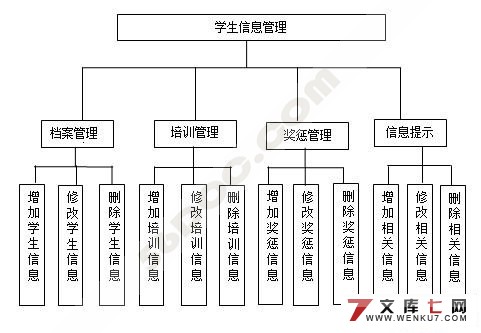
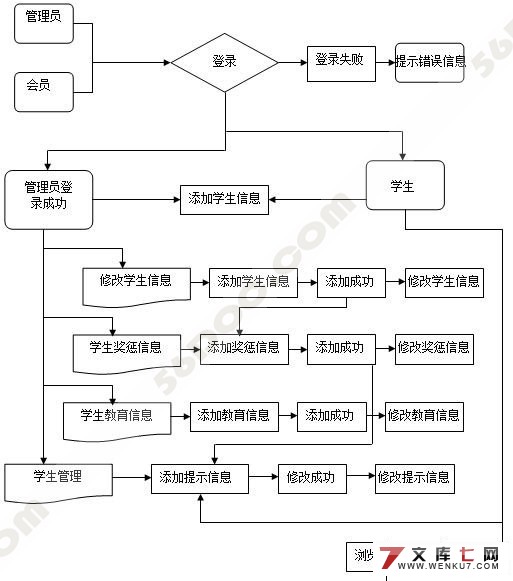
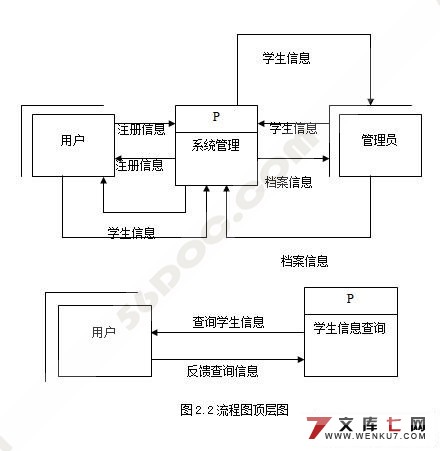
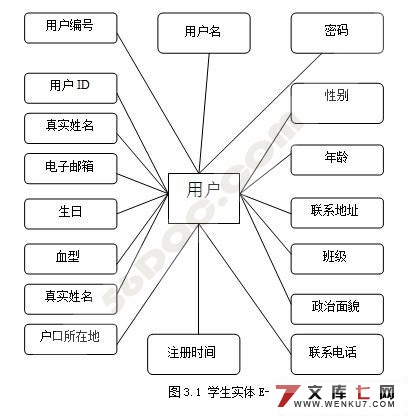
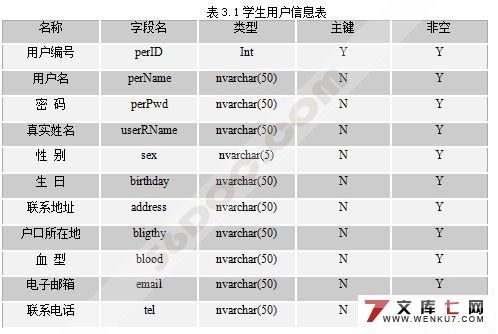
目 录 15000字
任务书 I
摘 要 II
ABSTRACT III
第1章 绪 论 1
1.1 学生管理系统概述 1
1.2 课题背景 1
1.2.1 国内外现状 1
1.2.2 课题研究意义 2
第2章 学生管理系统分析 4
2.1 需求分析 4
2.2 系统分析 4
2.2.1 组织结构分析 4
2.2.2 业务流程分析 4
2.2.2 数据流程分析 6
2.3数据字典 8
2.4 可行性分析 11
2.4.1 经济可行性 11
2.4.2 技术可行性 11
2.4.3 操作可行性 12
第3章 数据库设计 13
3.1 数据库设计思想 13
3.2 数据库设计 14
3.2.1 概念设计 14
3.2.2 逻辑设计 16
3.2.3 物理设计 17
3.3输入输出设计 19
第4章 详细设计 20
4.1 系统设计 20
4.2 功能实现及详细解析 21
4.2.1 页面设计 21
4.2.2 用户管理 24
4.2.3 修改用户 25
第5章 系统的实施与维护 28
5.1 B/S架构特点技术 28
5.1.1 B/S概述 28
5.1.2 B/S应用 28
5.2 系统测试 28
5.2.1测试的意义和目的 28
5.2.2测试的方法 29
第6章 结 论 30
参考文献 31
致 谢 32
|













